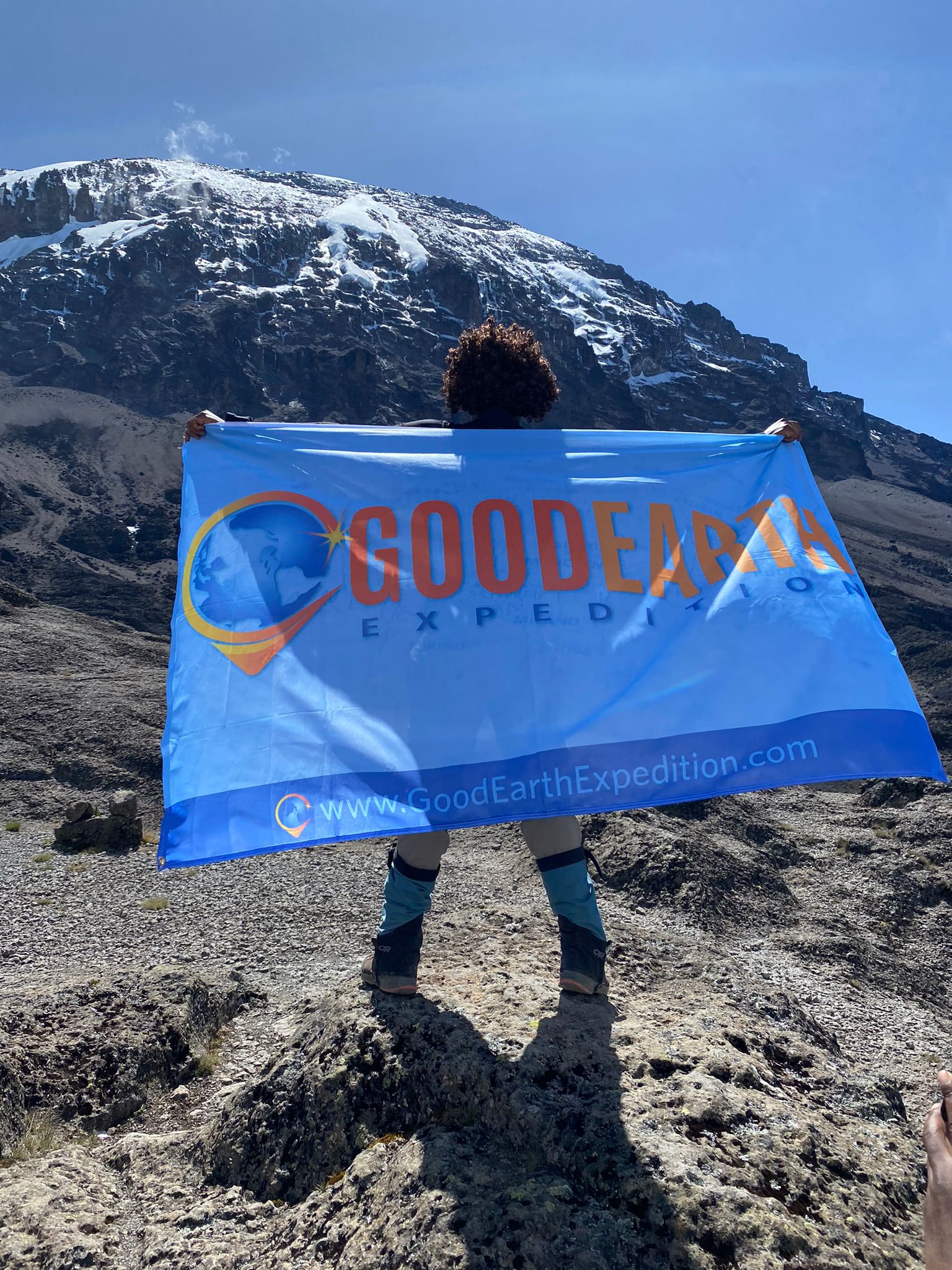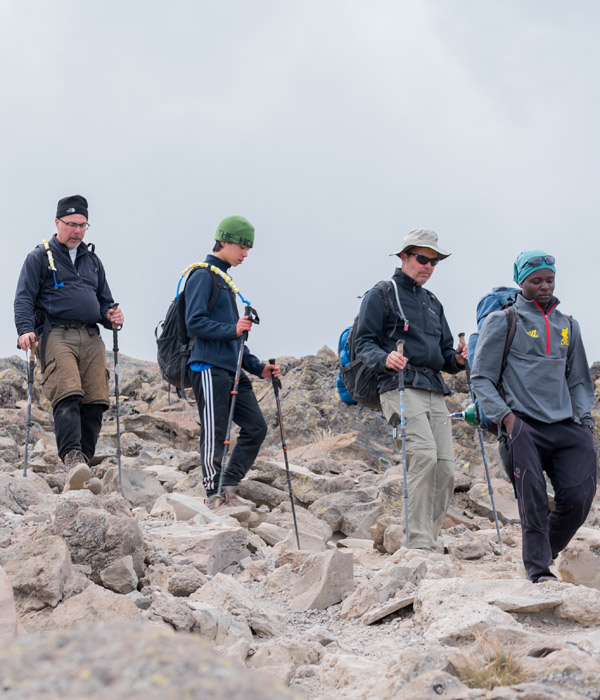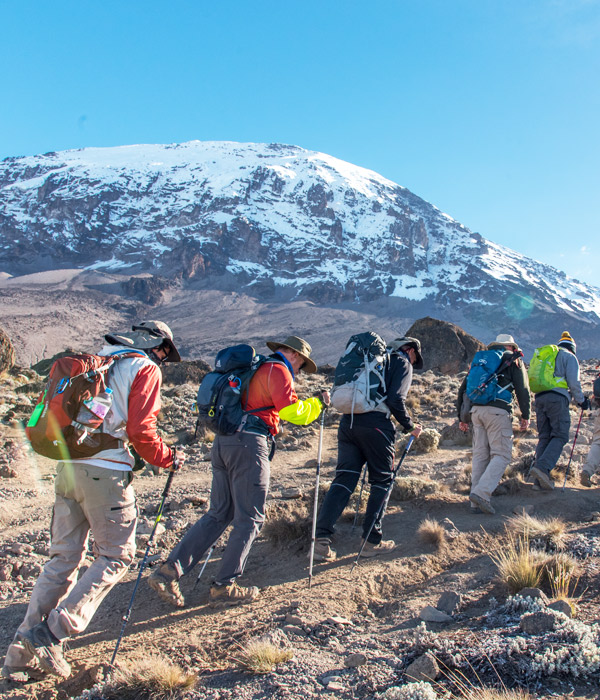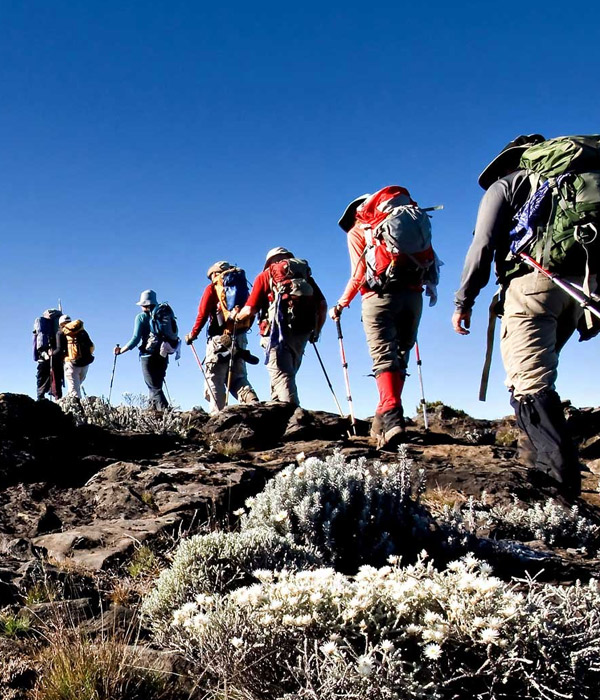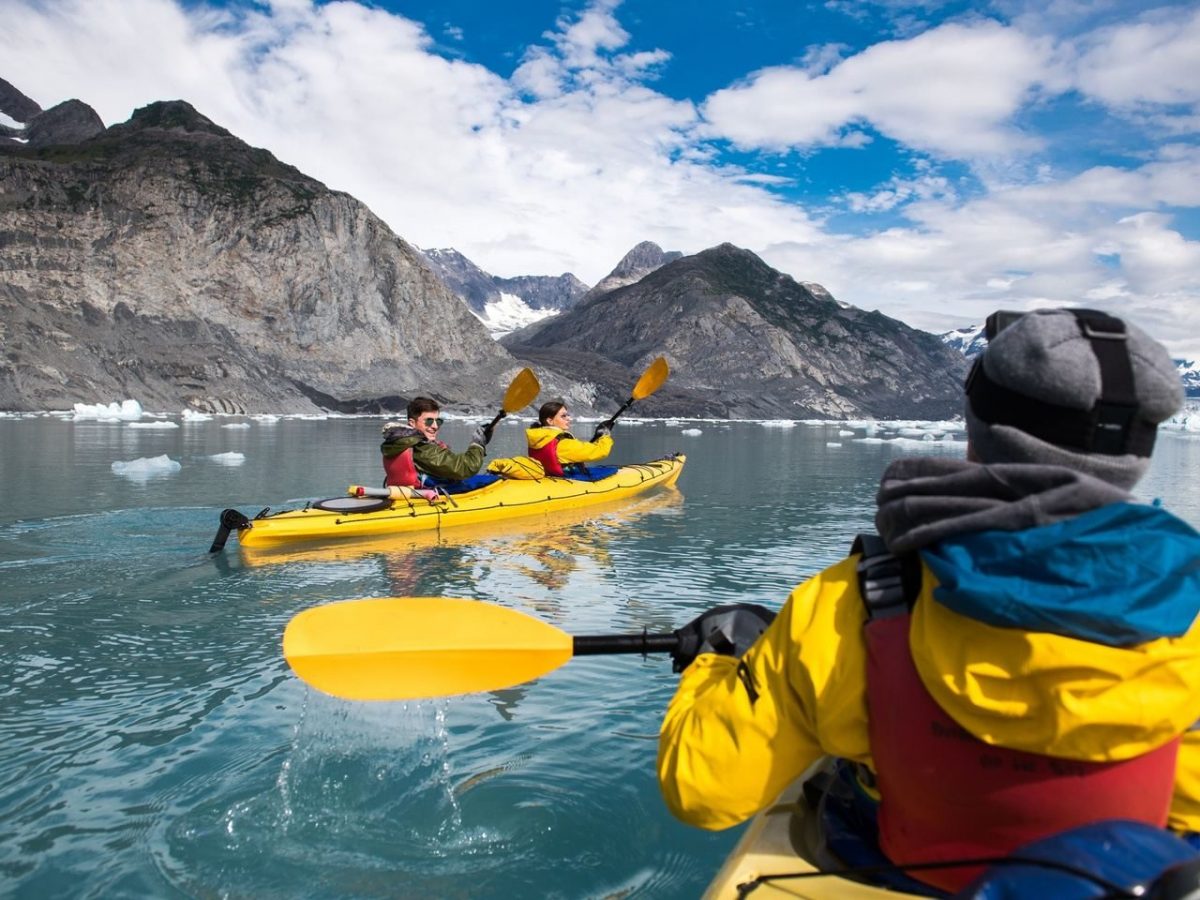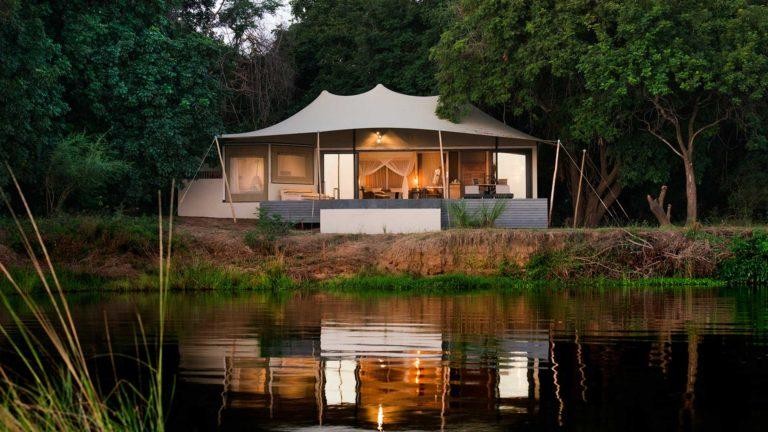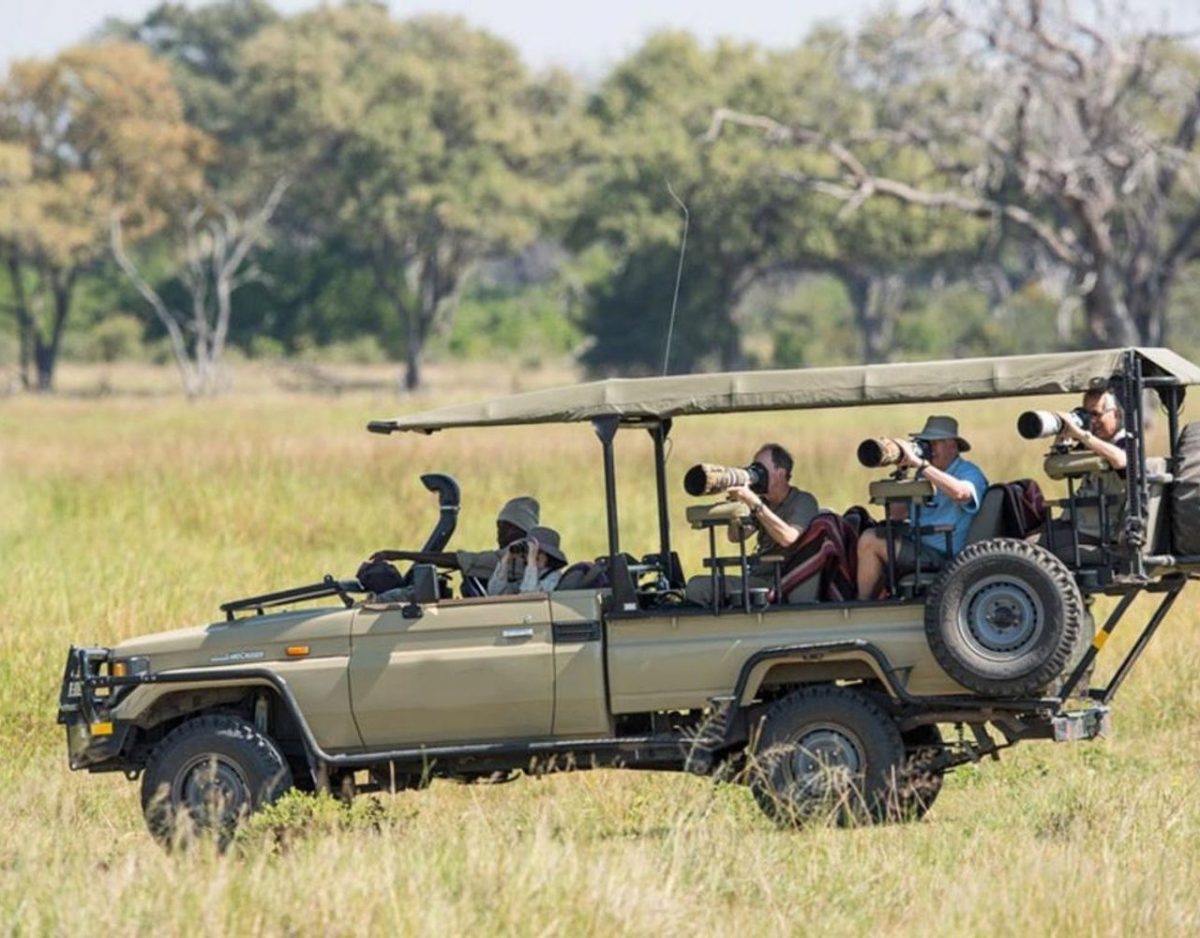Kilimanjaro Rescue
In an emergency, our Good Earth Expedition guides can conduct a mountain rescue. If any climber faces moderate and severe altitude sickness, our staff carries bottled oxygen for them on all the climbs and can quickly administer it to treat them.
Our staff carries a portable stretcher on northern routes to evacuate climbers who need to descend but cannot walk independently. Also, wheeled stretchers provided by the park are available on other routes for climbers.
We also provide helicopter rescue operations, where our staff can initiate helicopter evacuation through Kilimanjaro MedAir.
Emergency Oxygen
Our guide at Good Earth Expedition carries bottled oxygen on all climbs as a precaution and safety measure. We use this carried oxygen canister only in emergency cases.
We don’t use oxygen canisters to assist those clients or climbers who need to acclimatize on their own to climb higher adequately. Descent is the most immediate treatment for moderate and severe altitude sickness.
It is always possible to descend, and to descend rapidly, using Kilimanjaro’s trails. To treat those with moderate to severe altitude sickness, oxygen is only used to treat a sick climber when necessary, along with descent.
Some operators advocate using supplemental personal oxygen systems to treat AMS symptoms. It is risky to provide oxygen in this way, and for this reason since it only serves as a temporary cure for altitude sickness. The customer will be at an even higher altitude without sufficient acclimatization after the usage of oxygen is stopped.
Because it could be harmful, is entirely unneeded, and goes against the essence of climbing Kilimanjaro, 99.9% of the companies on the mountain don’t offer supplemental oxygen.
The mountain’s significant elevation and the need for climbers to adjust to lower oxygen levels at altitude present a difficulty. Using additional oxygen is like lowering the mountain to sea level, where almost anyone can reach the top.
Here’s A List Of Some Of The Gear That Will Accompany You On Your Climb.
- Comprehensive first aid kits
- Pulse oximeters to check your O2 levels
- Portable oxygen
- Stethoscopes for lung checks
- Portable Altitude Chamber (PAC)
- Patient transport litter (Same as US Army)
- Backup cold weather gear
- Water purification
Portable Stretcher
There are large, one-wheeled rescue stretchers on Mount Kilimanjaro, although they are only accessible on several park paths. That implies that bringing a climber down the mountain without these stretchers could be challenging for Kilimanjaro staff if the climber cannot walk owing to severe altitude sickness or a leg injury that limits movement. The wounded climber is typically helped by being carried on one’s back.
In an emergency, if a climber cannot walk alone and the trekking party is some distance from the park’s stretchers, Good Earth Expedition carries a portable stretcher on the northern routes.
Our foldable stretchers are lightweight, sturdy, and compact. The tool can swiftly remove a hurt climber from the mountain. And the subject is strapped on the stretcher before use.
The climber is then guided to safety by porters who grasp onto the handholds.
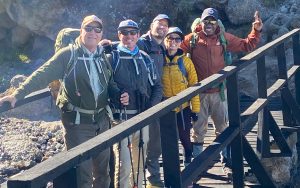
Kilimanjaro Helicopter Evacuation
Our partner is Kili MedAir, a helicopter company that provides rescue services on Mount Kilimanjaro. Within minutes of receiving a distress call, rescue operations begin.
All emergencies on the mountain are extraordinarily competent and ready, thanks to expert pilots, highly skilled rescue medics, and emergency flight technicians.
Only customers with the necessary travel insurance are eligible for this service. To take part in our trips, you must purchase specific travel insurance.
To be eligible for a helicopter rescue, clients must be insured to trek at high altitudes of up to 6,000 meters. Our staff will confirm your travel insurance before the expedition.
Gamow Bag
The Gamow Bag can mimic a 4,800-foot descent at 9,800 feet (3,000 m) (1,500 m). After spending two hours in the bag, the individual’s body chemistry will have “reset” to the lower altitude.
They can be outside the bag for up to 12 hours during this acclimatization. And it should be sufficient to get them to a lower altitude and allow for additional acclimatization.
A small hyperbaric chamber called the Gamow Bag is used to treat AMS. With the inflatable bag, a descent to a lower altitude is simulated. To boost the oxygen concentration, the patient is placed inside the bag before inflating it. A Gamow sack typically weighs 12 lbs.
There are no Gamow bags in our workforce. Gamow bags cannot be used on Mount Kilimanjaro because the descent is the fastest and easiest remedy.
Best Route To Climb Kilimanjaro
Kilimanjaro is a challenging mountain with many different routes to choose from. But, with Good Earth
Expedition, your difficult route can be easy and enjoyable!
Best Place Destinations
We provide some very affordable prices compared to others.

